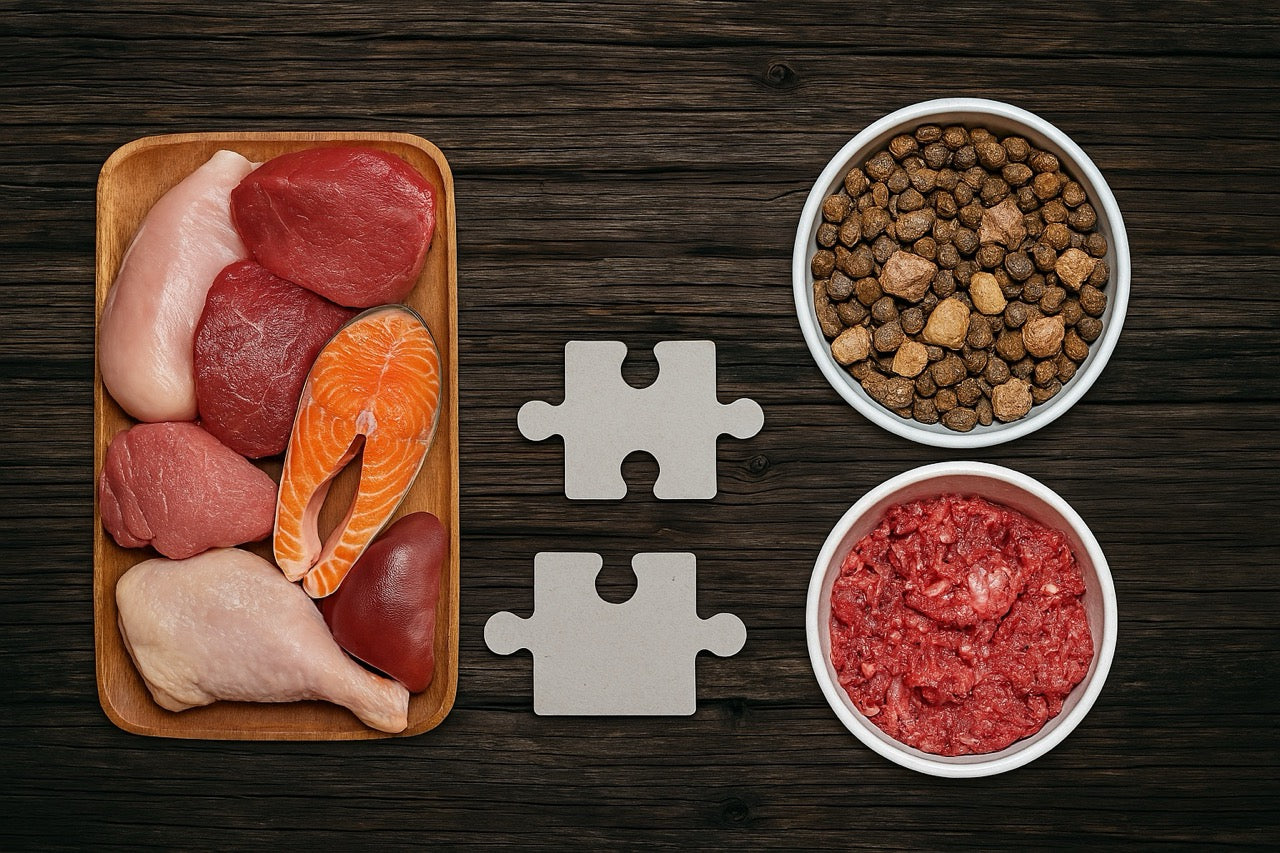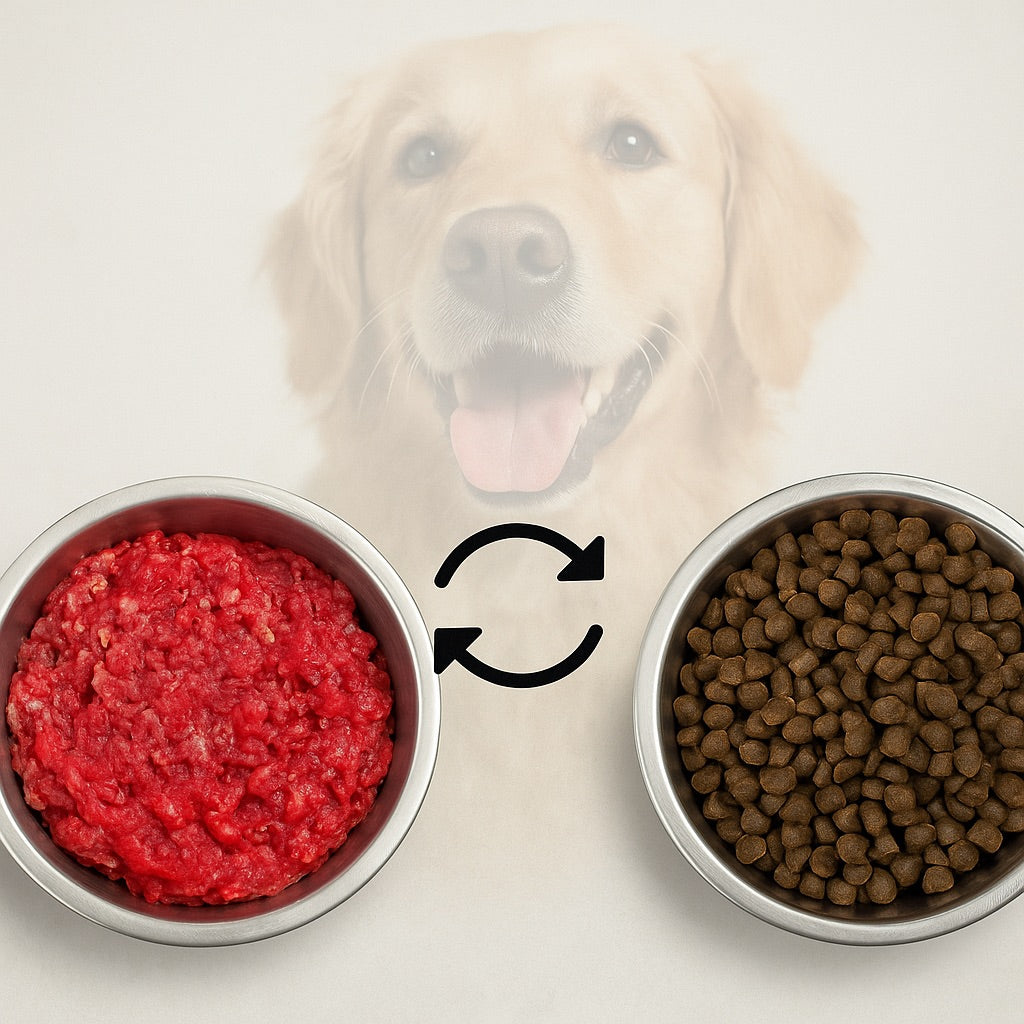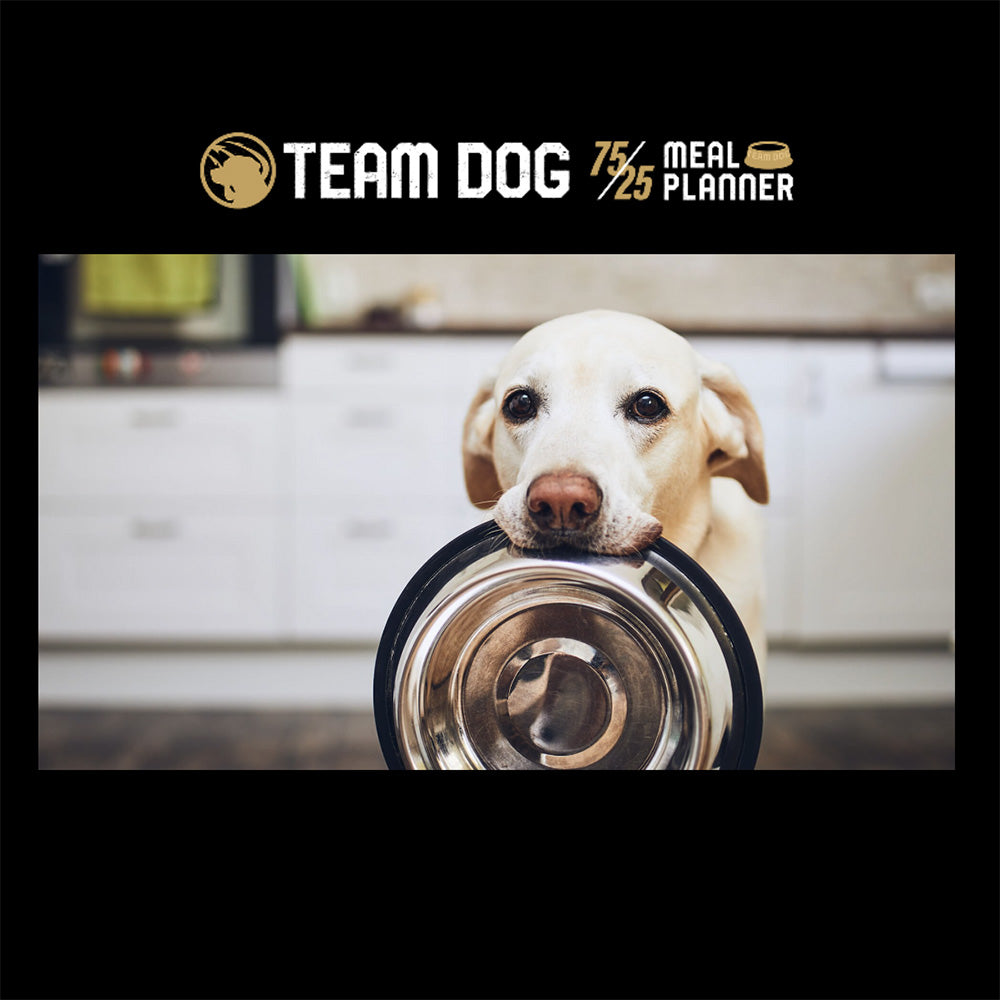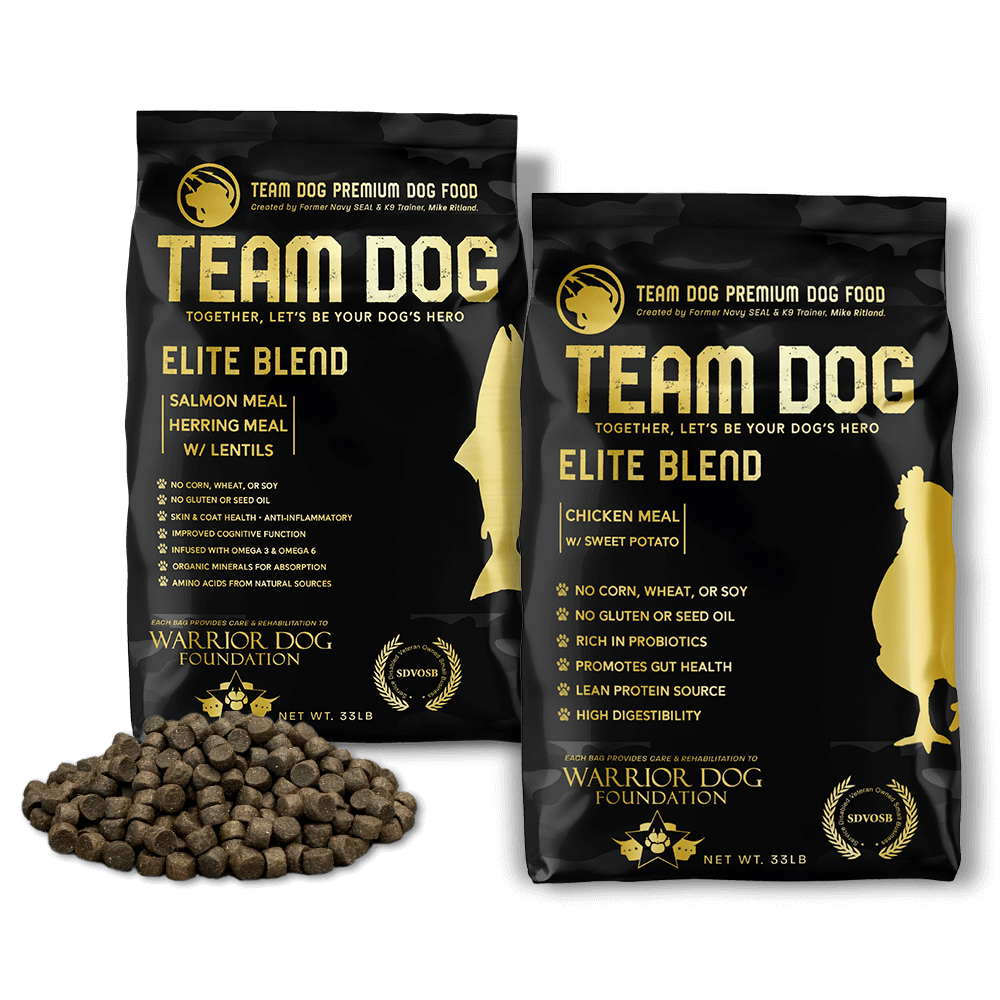Protein Puzzle In Your Pet's Dish: Meal Proteins, Whole Meats, and By-Products in Pet Food

Navigating the pet food aisle can be a daunting task, especially when trying to decipher the protein sources listed on the label. "Meal," "whole meat," and "by-products" are common terms, but what do they really mean for your pet’s nutrition? Understanding the differences between these protein sources is crucial for making informed decisions about your dog’s diet. This article aims to provide an overview of these ingredients, exploring their characteristics, benefits, and potential drawbacks.
Whole Meats
Whole meats, often referred to as "fresh" or "frozen" meats, typically consist of the skeletal muscle tissue of animals, such as beef, chicken, or pork. Some potential advantages of this type of protein source are outlined below.
- Palatability and Texture: Whole meats retain their natural moisture content, contributing to palatability and texture, which can be more appealing to picky eaters.
- High-Quality Protein: They are generally considered a high-quality source of protein, providing essential amino acids crucial for muscle development and maintenance.
- Natural Fats: While variable, the fat content provides energy, enhances flavor, and aids in the absorption of fat-soluble vitamins. The presence of healthy fats, such as monounsaturated fatty acids (MUFAs) found in greater amounts in fresh meats, can provide benefits like supporting the cardiovascular system and the immune systems.
- Nutrient Variety: The overall nutritional profile of whole meats can vary depending on the source of the meat, the region in which it comes from, and what it was fed prior; therefore, it is important to use a brand that tests their diets to ensure complete and balanced nutrients are being provided to your pet.
- Overall Considerations: Consider moisture content in the whole meat cuts, as this can “water down” the protein per pound in comparison to concentrated protein sources, such as meals.
Meal Proteins
Meat meals are produced through rendering, a process that cooks animal tissues to remove moisture and fat. This results in a concentrated protein powder, which is a rich source of lean animal protein for pet foods. Common examples include chicken/poultry meal, beef meal, and fish meal.
- Dense Protein Source: Meat meals offer a dense source of protein, making them a valuable ingredient in pet food formulations.
- Lower Moisture Content: They have a lower moisture content compared to whole meats, resulting in a higher protein concentration by weight and a lower crude fat content.
- Mineral Richness: The mineral content, particularly calcium and phosphorus, can be higher in meat meals. This can provide natural sources of calcium and phosphorus, but there is a maximum amount that is safe for dogs, so look for a diet that meets the Association of American Feed Control Officials (AAFCO)’s nutritional requirements.
- Glucosamine and Chondroitin: Meals are naturally inherent in glucosamine and chondroitin, which have been used for joint support claims.
- Overall Considerations: Ensuring quality, as the quality of meat meals can vary depending on the source materials and processing methods, so it’s important to keep this in mind. In addition, since source materials and processing methods affect nutritional values, frequent testing of protein and mineral content of meat meals is beneficial too.
By-Products
Meat by-products encompass the non-rendered, clean parts of animals other than muscle meat. This can include organs like the liver, kidneys, lungs, and spleen. Often misunderstood, by-products can be great sources of essential nutrients.
- Nutrient Density: By-products can be a valuable source of nutrients, particularly vitamins and minerals, which can reduce the need for synthetic vitamin and mineral premixes.
- Cost-Effective: By-products can offer a more cost-effective way to provide essential nutrients.
- Sustainable: Utilization of by-products reduces the amount of waste and can help with sustainability causes.
- Overall Considerations: The nutritional composition of by-products can vary significantly depending on the specific tissues included. To help with transparency, look for pet food labels that specify the by-products used, such as "beef liver".
A Balanced Perspective
It's important to recognize that each of these protein sources can play a role in a balanced pet diet. Whole meats provide a foundation of high-quality protein, while meal proteins offer a concentrated source of essential amino acids. By-products can also contribute valuable nutrients while reducing waste. Even though all have great nutritional benefits, it is important to assess the nutritional values individually and check quality frequently.
-
Nutritional Adequacy:
- The Association of American Feed Control Officials (AAFCO) establishes nutrient profiles for pet food, ensuring that diets meet the minimum nutritional requirements for dogs and cats.
-
Ingredient Quality:
- The quality of ingredients is paramount, regardless of whether they are whole meats, meal proteins, or by-products.
-
Individual Needs:
- The optimal protein source for a pet can vary depending on factors such as age, breed, activity level, and health status.
-
Label Reading:
- Learn to read pet food labels carefully, as this can help determine what type of meat (whole, meal, or byproduct/organ) is used.
- Ingredients are listed in descending order by weight, which other brands use to sound appealing but fall short of delivering protein-rich ingredients.
- Learn to read pet food labels carefully, as this can help determine what type of meat (whole, meal, or byproduct/organ) is used.
Conclusion
Understanding the differences between meal proteins, whole meats, and by-products empowers pet owners to make informed decisions about their pets' diets. Taking into consideration the latest research and prioritizing ingredient quality, nutritional adequacy, and individual needs, you can ensure that your dog receives the optimal nutrition for a healthy and happy life.










